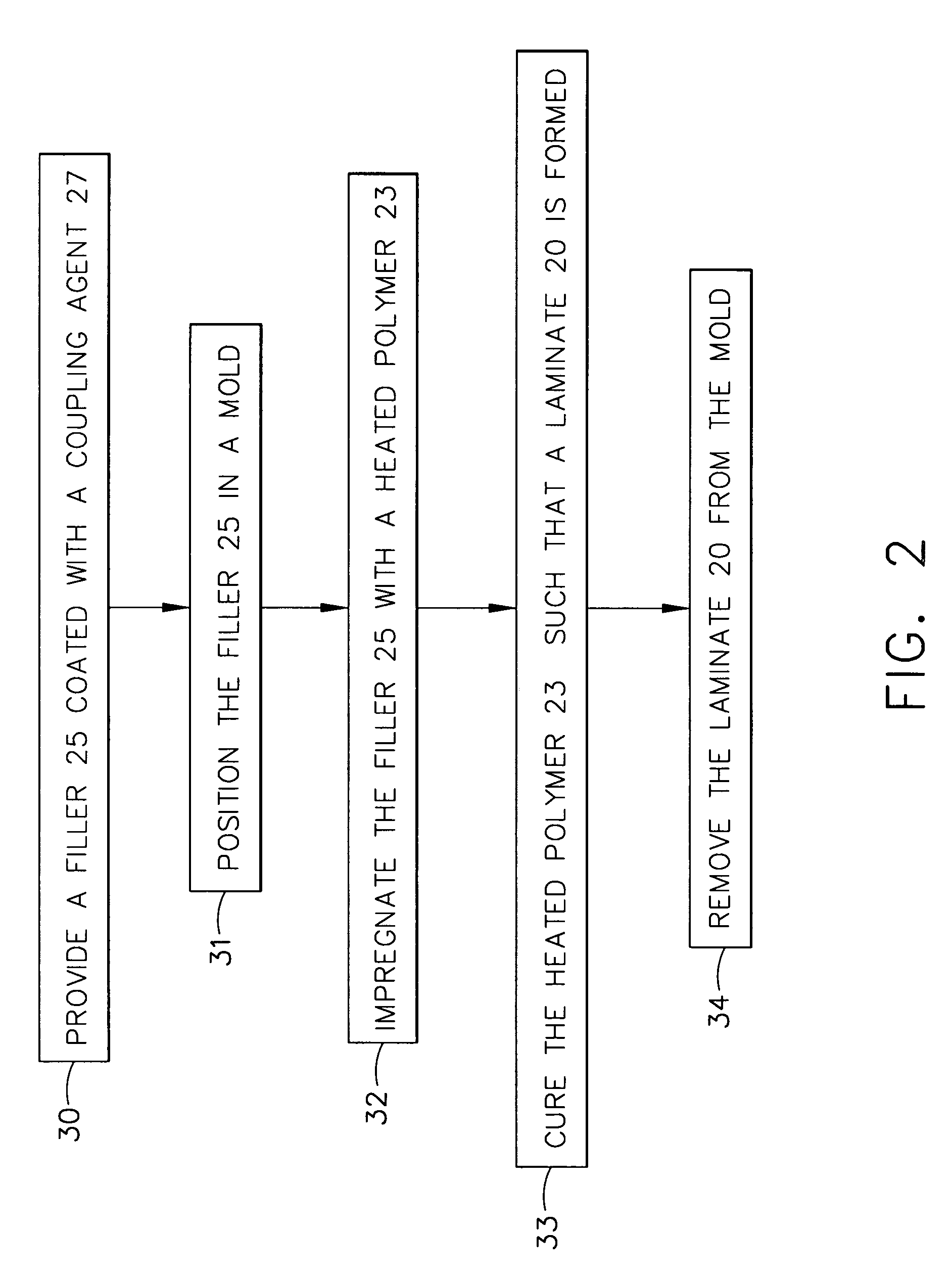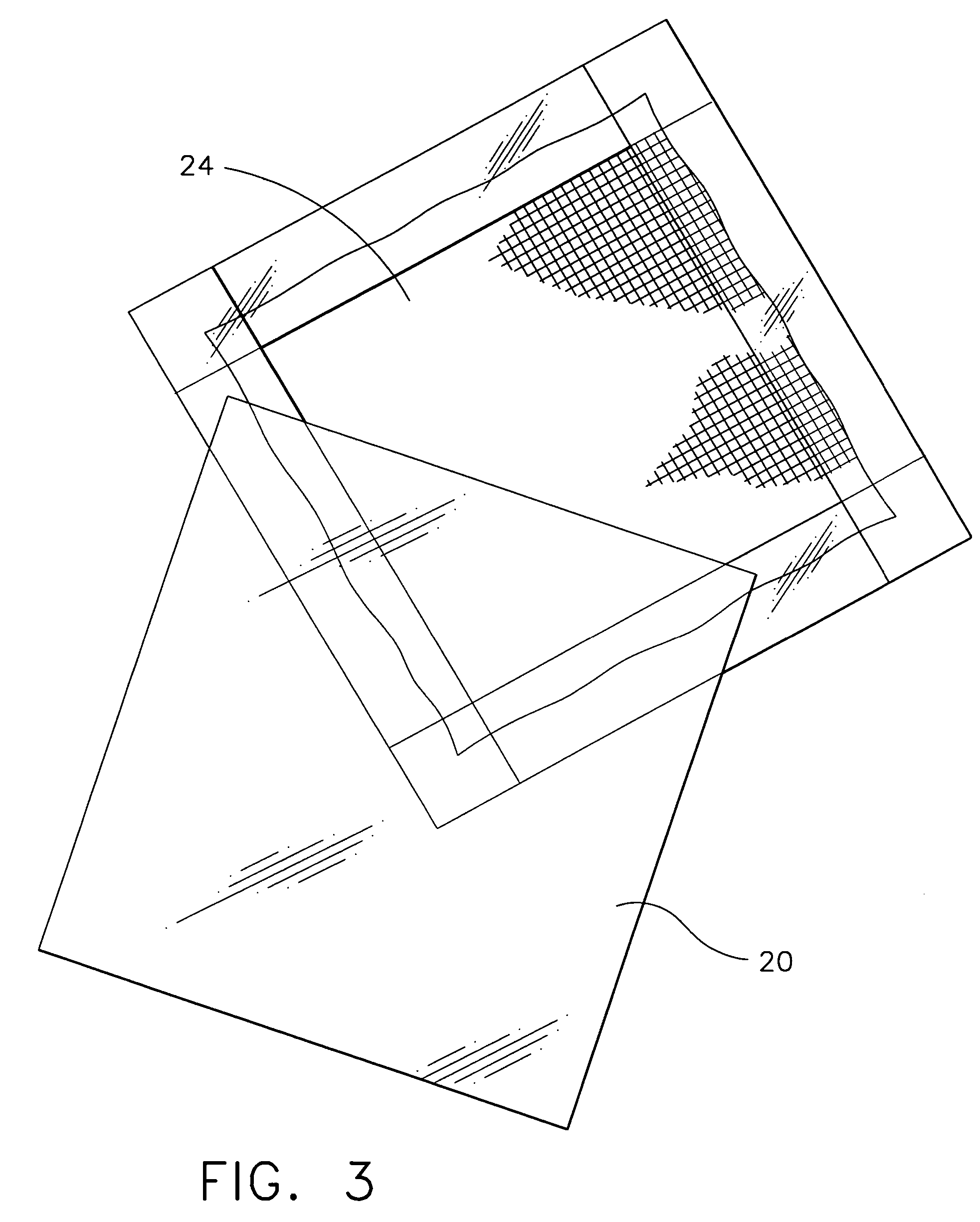Methods of making optically clear structural laminates
a structural laminate and optically clear technology, applied in the field of structural laminates, can solve the problems of glass being too heavy, difficult to shape into complex forms, brittle and difficult to manufacture, etc., and achieves tensile strength of about 10,000 psi
- Summary
- Abstract
- Description
- Claims
- Application Information
AI Technical Summary
Problems solved by technology
Method used
Image
Examples
example 1
[0051]An optically clear structural laminate was produced according to an embodiment of the present invention. A fiberglass fabric 24, as seen in FIG. 3, was produced from the Hexcel Corporation in California. The fiberglass used was 108 style fabric 24 and was 0.0025″ thick. The fabric 24 had a refractive index of 1.550. The coupling agent was already applied to the fabric by the vendor. The coated fabric was then placed in the RTM mold. A 100 gram sample of ANGSTROMBOND AB9300 epoxy resin available from Fiber Optics Center in New Bedford, Mass. was degassed for 10 minutes in a bell jar using 28 inches of mercury and heated to a temperature of 150 degrees F. for 20 minutes. The polymer 23 had a refractive index of 1.548 at 589 nm. The heated polymer was then transferred to the mold by vacuum. The polymer impregnated fabric was then cured for 16 hours at 150 degrees F. and postcured at 250 degrees F. for 3 hours such that a laminate 20 was produced.
[0052]Other laminates 20 of the pr...
PUM
| Property | Measurement | Unit |
|---|---|---|
| refractive index | aaaaa | aaaaa |
| temperature | aaaaa | aaaaa |
| temperature | aaaaa | aaaaa |
Abstract
Description
Claims
Application Information
 Login to View More
Login to View More - R&D
- Intellectual Property
- Life Sciences
- Materials
- Tech Scout
- Unparalleled Data Quality
- Higher Quality Content
- 60% Fewer Hallucinations
Browse by: Latest US Patents, China's latest patents, Technical Efficacy Thesaurus, Application Domain, Technology Topic, Popular Technical Reports.
© 2025 PatSnap. All rights reserved.Legal|Privacy policy|Modern Slavery Act Transparency Statement|Sitemap|About US| Contact US: help@patsnap.com



